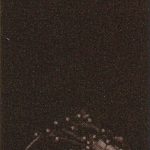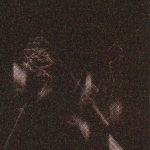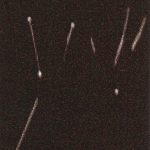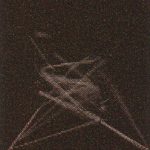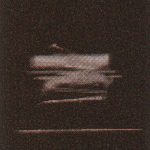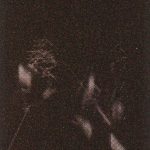Marc Downie, Paul Kaiser, Shelley Eshkar: Loops
Artist(s):
Title:
- Loops
Exhibition:
Creation Year:
- 2002
Medium:
- digital portrait
Category:
Keywords:
Artist Statement:
This digital portrait of Merce Cunningham is derived from a recording of Loops, his solo dance for hands and fingers. The motion-captured joints have become nodes in a network that sets them into fluctuating relationships with one another, at times suggesting the hands underlying them, but more often depicting complex cat’s-cradle variations. Driven by fragments of Cunningham’s motion, the piece seeks to develop a portrait around the uncanny absence of its subject.
The motion of the hands is rebuilt by a colony of synthetic creatures modeled using techniques from artificial intelligence. This visual network is rendered in a series of related styles, reminiscent of hand-drawing, but all with a motion and odd attentiveness quite different from drawing, evoking primitive biological or atomic worlds. These visual worlds are combined with an unsynchronized looping narrative by Cunningham (reading from his diary) and music by Takehisa Kosugi. The piece unfolds across a number of time scales. Things change with almost every frame of animation and moments that occur perhaps only once a day.
Technical Information:
The Loops system runs in real time and generates itself afresh each time it is run. The original motion-captured material drives the movement of 42 small autonomous creatures. These complex creatures probabilistically make decisions concerning their appearance, the quality of their movement, and their structural connections to other points in the hands. The goal was to create a system (and an artistic process) that was complex enough to surprise us often, but controllable enough to let us take advantage of those surprise discoveries.
The architecture is open and networked; a number of visualizations and custom applications running on separate machines were used in the creative process. These span a spectrum from additional interactive graphical applications to offline analyses and simulations to a command language based on the “python” programming language.
The custom graphics, behavior, and motor system run on high-end consumer hardware, typically dual-processor Pentium III. Simple computer-vision software runs on a separate machine. The graphics system uses Microsoft DirectX S’s interfaces to run on Nvidia GeForce3 hardware, exploiting the programmable vertex and pixel-shading language support found in these products. The behavior architecture is almost entirely written in the Java programming language. Both the behavior and motor systems used here are adaptations of the Synthetic Characters Group’s “C4” architecture.
Process Information:
Driving the “point creatures” that make up Loops is a behavioral “script.” This 10-minute script (which is looped throughout the piece) does not dictate what behaviors these creatures perform, but it does modify “behavioral tendencies” and opportunities for adaptation.
The creation of Loops, therefore, consisted of two main tasks. First, a vocabulary of visual styles, behaviors, ways of connecting the points and motion qualities to be created. Second, the script, an excerpt of which is shown here, was assembled. Both of these two tasks were achieved collaboratively and interactively. While a version of the Loops system was running, the artists manipulated the rendering, visualized the behavior, and modified the stored vocabulary of the point creatures in real time using a network of computers synchronized to the main behavior system.
Affiliation Where Artwork Was Created:
- The Media Lab, MIT
Other Information:
Images:
2: Throughout the script there are references to terms such as “tendral” or “amoeba.” These are names that the artists used to talk about the basic stylistic vocabulary built for the piece. They refer to behavioral tendencies, connection topologies, and/or rendering styles. These common labels became increasingly important as the piece’s stylistic vocabulary developed.
3: By changing how gradually or suddenly new behavioral tendencies are introduced into the creatures by the script we can modify the abruptness of the transition. If we quickly force a behavioral tendency to have a very high value, we startle creatures into reevaluating their behaviors. But by gradually introducing new behavior, we can create hybrid and “indecisive” states in the colony.
4: The creatures are responsible for showing how they are connected to other points. Sometimes they choose to connect themselves to points that make sense in a traditional joint hierarchy. However, they can choose to produce complex “cat’s cradles” or sparse points.
5: The way in which the point creatures adapt their geometry to indicate how they are “connected” to other points changes throughout the piece. One of the earliest styles we built was the “tentative tendril” growth style, where points seem to be gently seeking nearby points in the hand.
6: “Force propagation” refers to the virtual dispersive medium in which the point creatures are “embedded in.” Creatures can inject force into what is in essence a simple cloth simulation, to perturb and expand the geometry of nearby creatures.
7: “Forest fire” message propagation refers to a complex extension of the “force propagation. “Instead of passing force into a simple physics simulation, points pass messages of behavioral tendency. This creates a deliberately brittle positive feedback system. Behaviors change between points in a way similar to how fire spreads in a forest. These complex behavioral dynamics were extensively simulated in isolation and could be visualized while the piece was running.



